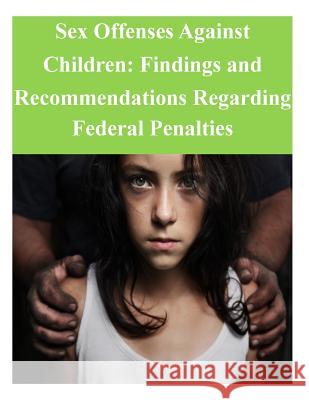Sex Offenses Against Children: Findings and Recommendations Regarding Federal Penalties » książka
Sex Offenses Against Children: Findings and Recommendations Regarding Federal Penalties
ISBN-13: 9781502929570 / Angielski / Miękka / 2014 / 44 str.
Sex Offenses Against Children: Findings and Recommendations Regarding Federal Penalties
ISBN-13: 9781502929570 / Angielski / Miękka / 2014 / 44 str.
(netto: 49,77 VAT: 5%)
Najniższa cena z 30 dni: 51,96 zł
ok. 16-18 dni roboczych
Bez gwarancji dostawy przed świętami
Darmowa dostawa!
The United States Sentencing Commission submits this report at the request of Congress on a subject of deep concern - sex offenses against children. In The Sex Crimes Against Children Prevention Act of 1995 (SCACPA), Congress addressed the serious problem of child pornography and other sex crimes against children and directed the Commission to increase certain penalties for these crimes. The Commission carried out that directive on April 30, 1996 by submitting to Congress guideline amendments that raised the penalties. The SCACPA also directed the Commission to prepare this report, analyzing the sentences imposed for these offenses, and to recommend additional amendments as appropriate. The Commission shares Congressional concerns about protecting America's children from sex offenders and has joined in the effort to do so by recommending a number of amendments that would target the most dangerous offenders, raise sentences, and improve the operation of the guidelines. In preparing this report, the Commission analyzed all 1994 and 1995 sentences imposed under each of the relevant statutes-a total of 423 cases-to determine what kinds of sentences the defendants received and whether any modifications were necessary. Although federal sentencing policy potentially serves a variety of functions regardless of the number of cases involved, federal prosecutions of child sex offenses represent a small percentage of the total number of such cases nationwide: the vast majority of which are prosecuted in state courts. In addition, because of the nature of federal jurisdiction, 77% of the offenders sentenced in federal court for child sexual abuse were Native American. The Commission also notes that, although federal prosecution is important in the area of child pornography offenses, especially those involving the use of computers, the federal cases sentenced to date typically do not involve the type of computer use that would result in either wide dissemination or a likelihood that the material will be viewed by children. The number of cases sentenced under each of the relevant statutes and guidelines, as well as information about the sentences imposed, is contained in Section A, Table 1. Penalties for sex offenses against children have been increased several times in recent years and are quite severe. Nevertheless, the Commission's analysis indicates that some amendments may be appropriate to increase sentences for the most dangerous offenders, to ensure consistency in sentencing, and to clarify certain provisions that have been improperly interpreted and used. It appears that a significant portion of child pornography offenders have a criminal history that involves the sexual abuse or exploitation of children and that those with such histories are at greater risk of recidivism. In order to ensure lengthy incarceration of repeat sex offenders who show the greatest risk of victimizing children, the Commission has significantly increased sentences for some child pornography offenses and is considering increases for other pornography and sexual abuse offenses. In addition, the Commission recommends that Congress increase certain statutory maximum penalties so that the guideline amendments designed to increase sentences are allowed to operate to their full extent without being capped by existing statutory limits.
Zawartość książki może nie spełniać oczekiwań – reklamacje nie obejmują treści, która mogła nie być redakcyjnie ani merytorycznie opracowana.











